Do you have a question about the Triumph Scrambler 1200 XE and is the answer not in the manual?
Explains warning, caution, and note symbols used in the handbook.
Details the meaning of warning symbols found on the motorcycle.
Prohibits tampering with the noise control system and warns about legal consequences.
Emphasizes the importance of reading and storing the handbook for safe operation.
Encourages customer feedback for product and service development.
Covers safety considerations specific to the motorcycle's design and use.
Provides safety warnings and precautions related to fuel and exhaust fumes.
Details essential protective clothing and helmet requirements for rider safety.
Offers guidelines for safe parking practices to prevent motorcycle movement or damage.
Warns about the hazards of using non-approved parts and accessories.
Advises on safe maintenance practices and the importance of correct equipment.
Provides critical safety advice for operating the motorcycle.
Explains motorcycle stability issues and how to manage them.
Covers safe operation and control using handlebars and footrests.
Advises on the use and wear limits of bank angle indicators.
Warns about potential damage when removing warning labels.
Continues the identification of motorcycle parts.
Identifies parts from the rider's perspective.
Covers instrument panel features, keys, and general information.
Details handlebar switches, cruise control, TC, ABS, and TPMS.
Covers seat care, USB, break-in, and daily safety checks.
Describes instrument panel layout and themes (Quartz/Chronos).
Explains various warning lights and indicator symbols.
Explains Turn Signals, Hazard Lights, High Beam, DRL, Low Fuel, and General Warning symbols.
Explains Speedometer, Odometer, Tachometer, and Fuel Gauge.
Details riding modes, their selection, and configuration.
Covers information tray, warnings, messages, contrast, themes, and detail.
Explains trip meters and fuel status display.
Covers coolant temperature and service indicator.
Provides information on the tire pressure monitoring system.
Guides main menu, bike setup, trip setup, and display settings.
Covers display setup for themes, brightness, language, units, clock, and date.
Covers instrument panel position adjustment.
Information on keys, smart key, and keyless ignition.
Details steering lock and switches on both handlebars.
Covers Cruise Control, ABS, and Traction Control.
Information on TPMS and tire pressures.
Details front and rear brake lever and pedal adjustments.
Information on fuel types and refueling.
Covers side panel removal, tool kit, and seat storage.
Outlines the recommended procedure for breaking in a new motorcycle.
Lists essential daily checks for safe motorcycle operation.
Procedures for stopping and starting the engine safely.
Instructions on moving off and changing gears.
Details proper braking techniques and safety precautions.
Explains the function and operation of ABS and cornering ABS.
Provides instructions for parking the motorcycle safely.
Safety advice for operating the motorcycle at high speeds.
Advises on the safe installation of accessories.
Provides guidelines for distributing and securing loads and their effect on stability.
Instructions for passengers and rider responsibility.
Outlines the importance and types of scheduled maintenance.
Step-by-step instructions for checking engine oil level.
Guides on changing engine oil and filter.
Overview of the cooling system and coolant type.
How to check and adjust coolant level.
Covers throttle and clutch inspection and adjustment.
Covers drive chain lubrication and inspection.
Details brake system inspection and pad replacement.
How to adjust front suspension spring preload and damping.
How to adjust rear suspension spring preload and damping.
Covers tire inspection, pressure, and replacement.
Covers battery safety, removal, installation, and charging.
Details the fuse box layout and fuse identification.
Covers headlight adjustment and other lighting components.
General cleaning advice and preparation for washing.
Instructions for washing and post-wash procedures.
How to care for paintwork, aluminum, chrome, and exhaust.
How to care for the seat and windshield.
Instructions for caring for leather products.
Provides guidance on preparing the motorcycle for storage.
Steps to take after storing the motorcycle.
Lists dimensions, weights, and performance figures.
Details engine and lubrication specifications.
Specifies fuel system, transmission, and gear ratio details.
Covers tire specifications and critical tightening torques.
Lists recommended fluids and lubricants.
Lists dimensions, weights, and performance figures.
Details engine and lubrication specifications.
Specifies fuel system, transmission, and gear ratio details.
Covers tire specifications and critical tightening torques.
Lists recommended fluids and lubricants.
Details compliance with FCC regulations.
Declares compliance with tire regulations.
Details compliance of the smart key system with FCC rules.
Explains warning, caution, and note symbols used in the handbook.
Details the meaning of warning symbols found on the motorcycle.
Prohibits tampering with the noise control system and warns about legal consequences.
Emphasizes the importance of reading and storing the handbook for safe operation.
Encourages customer feedback for product and service development.
Covers safety considerations specific to the motorcycle's design and use.
Provides safety warnings and precautions related to fuel and exhaust fumes.
Details essential protective clothing and helmet requirements for rider safety.
Offers guidelines for safe parking practices to prevent motorcycle movement or damage.
Warns about the hazards of using non-approved parts and accessories.
Advises on safe maintenance practices and the importance of correct equipment.
Provides critical safety advice for operating the motorcycle.
Explains motorcycle stability issues and how to manage them.
Covers safe operation and control using handlebars and footrests.
Advises on the use and wear limits of bank angle indicators.
Warns about potential damage when removing warning labels.
Continues the identification of motorcycle parts.
Identifies parts from the rider's perspective.
Covers instrument panel features, keys, and general information.
Details handlebar switches, cruise control, TC, ABS, and TPMS.
Covers seat care, USB, break-in, and daily safety checks.
Describes instrument panel layout and themes (Quartz/Chronos).
Explains various warning lights and indicator symbols.
Explains Turn Signals, Hazard Lights, High Beam, DRL, Low Fuel, and General Warning symbols.
Explains Speedometer, Odometer, Tachometer, and Fuel Gauge.
Details riding modes, their selection, and configuration.
Covers information tray, warnings, messages, contrast, themes, and detail.
Explains trip meters and fuel status display.
Covers coolant temperature and service indicator.
Provides information on the tire pressure monitoring system.
Guides main menu, bike setup, trip setup, and display settings.
Covers display setup for themes, brightness, language, units, clock, and date.
Covers instrument panel position adjustment.
Information on keys, smart key, and keyless ignition.
Details steering lock and switches on both handlebars.
Covers Cruise Control, ABS, and Traction Control.
Information on TPMS and tire pressures.
Details front and rear brake lever and pedal adjustments.
Information on fuel types and refueling.
Covers side panel removal, tool kit, and seat storage.
Outlines the recommended procedure for breaking in a new motorcycle.
Lists essential daily checks for safe motorcycle operation.
Procedures for stopping and starting the engine safely.
Instructions on moving off and changing gears.
Details proper braking techniques and safety precautions.
Explains the function and operation of ABS and cornering ABS.
Provides instructions for parking the motorcycle safely.
Safety advice for operating the motorcycle at high speeds.
Advises on the safe installation of accessories.
Provides guidelines for distributing and securing loads and their effect on stability.
Instructions for passengers and rider responsibility.
Outlines the importance and types of scheduled maintenance.
Step-by-step instructions for checking engine oil level.
Guides on changing engine oil and filter.
Overview of the cooling system and coolant type.
How to check and adjust coolant level.
Covers throttle and clutch inspection and adjustment.
Covers drive chain lubrication and inspection.
Details brake system inspection and pad replacement.
How to adjust front suspension spring preload and damping.
How to adjust rear suspension spring preload and damping.
Covers tire inspection, pressure, and replacement.
Covers battery safety, removal, installation, and charging.
Details the fuse box layout and fuse identification.
Covers headlight adjustment and other lighting components.
General cleaning advice and preparation for washing.
Instructions for washing and post-wash procedures.
How to care for paintwork, aluminum, chrome, and exhaust.
How to care for the seat and windshield.
Instructions for caring for leather products.
Provides guidance on preparing the motorcycle for storage.
Steps to take after storing the motorcycle.
Lists dimensions, weights, and performance figures.
Details engine and lubrication specifications.
Specifies fuel system, transmission, and gear ratio details.
Covers tire specifications and critical tightening torques.
Lists recommended fluids and lubricants.
Lists dimensions, weights, and performance figures.
Details engine and lubrication specifications.
Specifies fuel system, transmission, and gear ratio details.
Covers tire specifications and critical tightening torques.
Lists recommended fluids and lubricants.
Details compliance with FCC regulations.
Declares compliance with tire regulations.
Details compliance of the smart key system with FCC rules.
| Displacement | 1200 cc |
|---|---|
| Bore x Stroke | 97.6 mm x 80 mm |
| Compression Ratio | 11.0:1 |
| Transmission | 6-speed |
| Front Tyre | 90/90-21 |
| Rear Tyre | 150/70 R17 |
| Seat Height | 870 mm |
| Fuel Capacity | 16 L |
| Dry Weight | 207 kg |
| Engine Type | Liquid-cooled, 8 valve, SOHC, 270° crank angle parallel twin |
| Max Power | 89bhp (66.2kW) @ 7, 400rpm |
| Max Torque | 110 Nm |
| Final Drive | Chain |
| Frame | Tubular steel |
| Front Suspension | 250mm travel |
| Rear Suspension | 250mm rear wheel travel |
| Front Brakes | Brembo 4-piston radial monobloc calipers, ABS |
| Rear Brakes | Single 255 mm disc, Brembo 2-piston |
| Front Wheel | 21 x 2.15 in |
| Rear Wheel | 17 x 4.25 in |
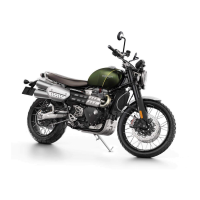
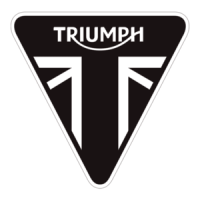






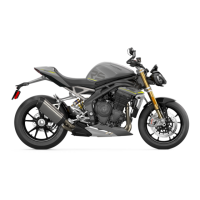
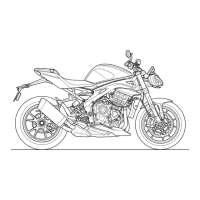
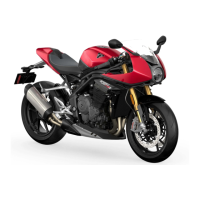
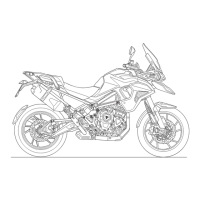
